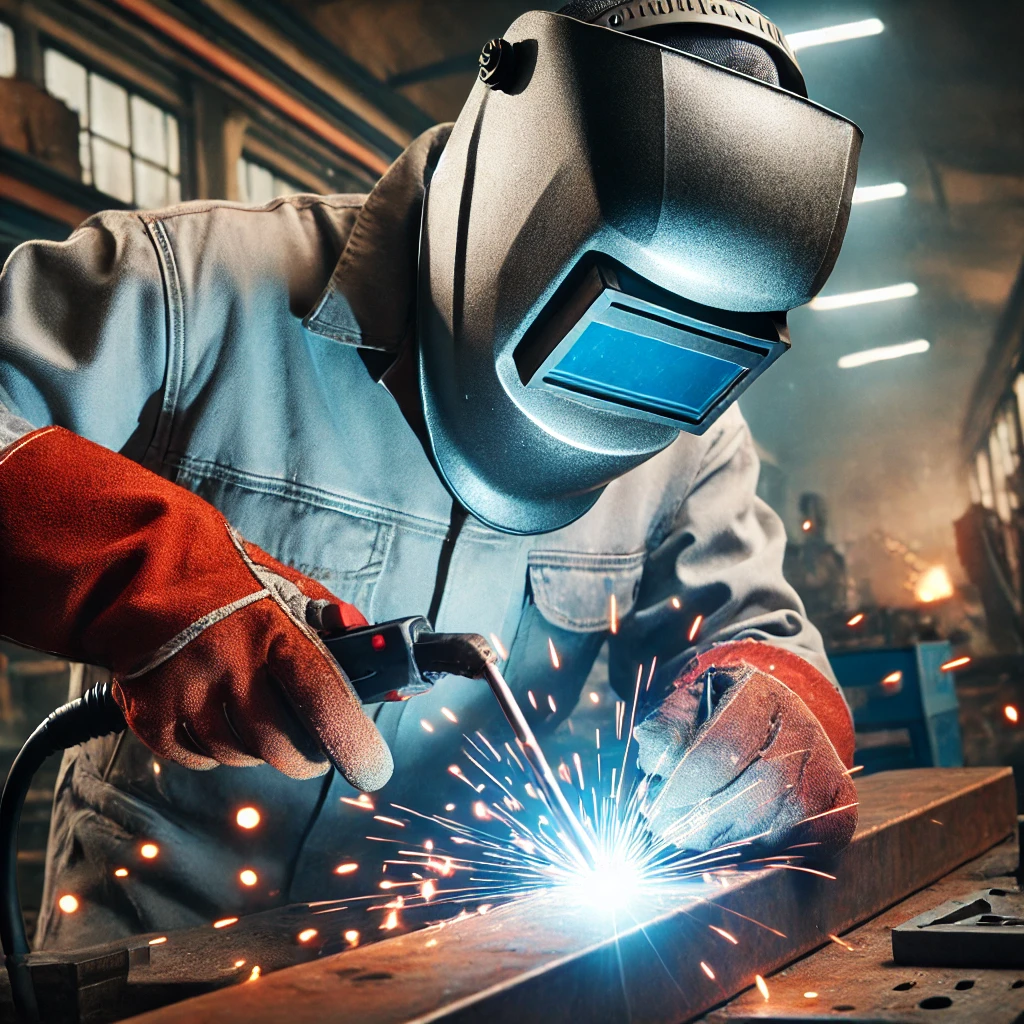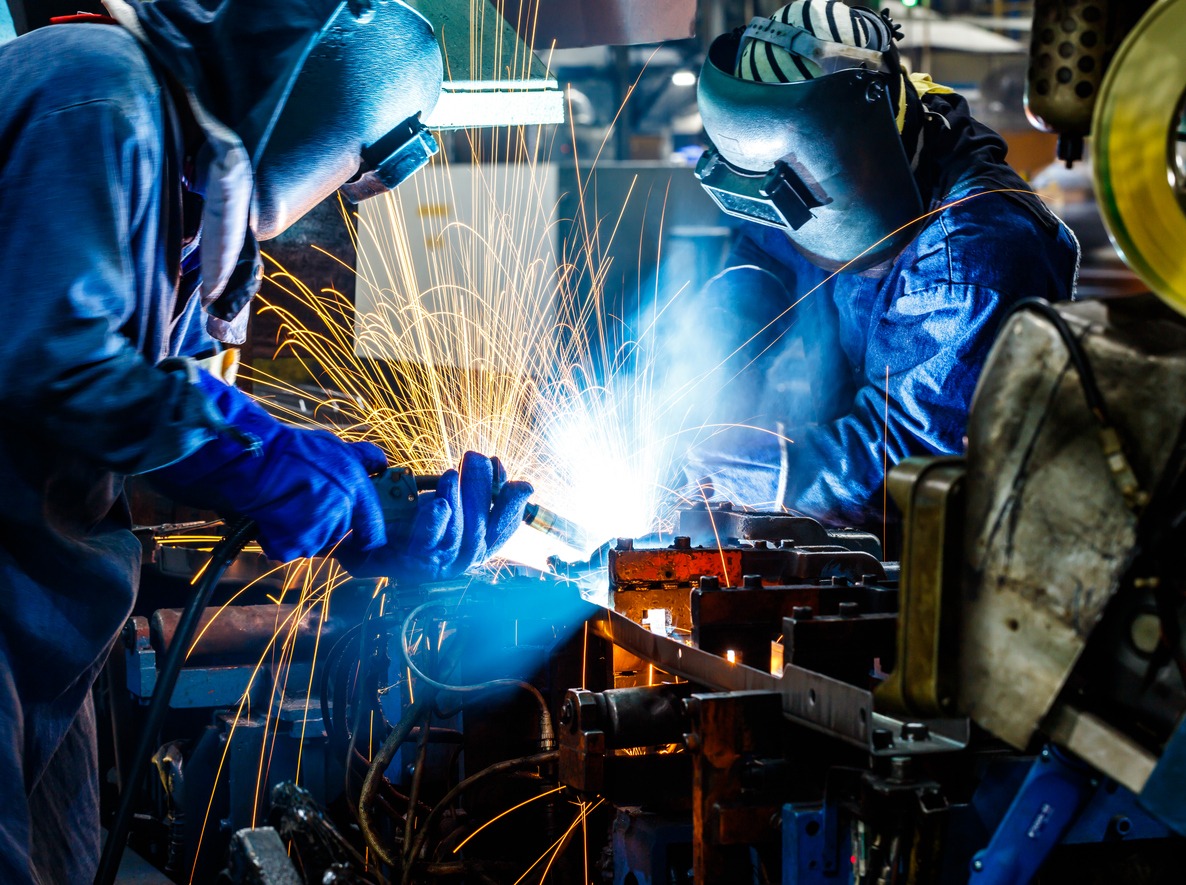Welder – Job Profile and Career Overview
Even today, in the age of smartphones, tablets, AI and the like, there is still a high demand for welders. This means that welders are a career option for individuals that makes it almost impossible not to get a job. In addition to the guarantee of employment, there is also a good prospect of a salary that is really impressive.
Table of contents
- Welder – Job Profile and Career Overview
- What does a welder’s job description include?
- What tasks and responsibilities does a welder have?
- In which industries do welders work?
- Where can welders find employment?
- How diverse is the welding profession?
- What are the working hours for welders?
- What is the income of a welder?
- What does welder training involve?
- Conclusion
What does a welder’s job description include?
Welders are very popular as employees. Accordingly, welder jobs in the various sectors are not only future-proof and well-paid. There are also a number of options for training in order to obtain the relevant certificates required for employment.
This is accompanied by the learning of various welder processes for different materials, seams and positions. These are the prerequisites for use in the metal trade or in steel and metal construction. This, in turn, is used in various sectors, ranging from onshore and offshore to aerospace and, of course, shipyards.
What qualifications does a welder need?
The qualifications form the basis for getting the job. Together with professional experience, they also determine the salaries paid. These increase significantly with years of experience and certain qualifications. Once the examinations have been passed, components can now be assembled in various systems and designs. This in turn requires knowledge of the welding equipment or welding robots used.
How is the welding process planned?
Before the actual welding, however, there are other activities associated with it. These include planning the welding process. The materials required must also be requested and provided accordingly. Once the preparations have been made, the welding processes are carried out. As soon as these have been completed, the results must be checked. Depending on the field of application, this can be carried out by the welder themselves or by appropriately certified specialised personnel.
Very high ethical standards also apply to welders. The systems and components they assemble are often worth millions. Their failure, for example due to a defective weld seam, can mean the loss of human life or damage to the health of a large number of people.
In addition to this responsibility for the overall construction and its use, it is also about the work itself, which must be carried out with great care. Above all, it is important to minimise or avoid fire and explosion hazards as well as dangers from metal splashes and electricity.
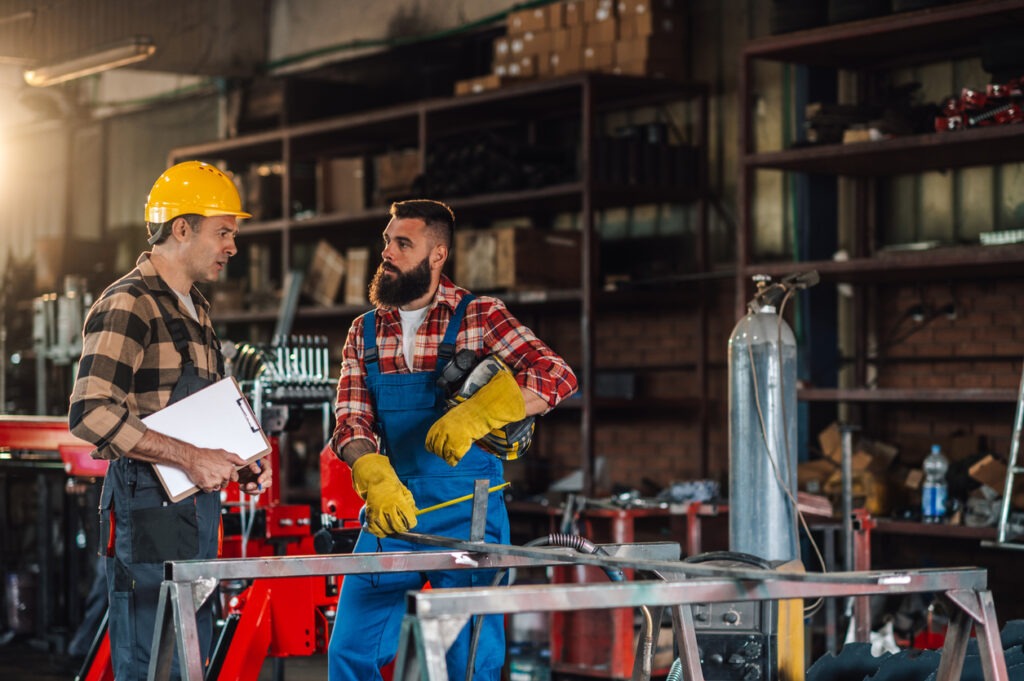
What tasks and responsibilities does a welder have?
Welders join metals and plastics together. The right welding process must be selected for this. This must both guarantee the necessary strength of the joint and be selected according to economic standards. In addition, the welding filler materials must be selected. Depending on the process, it may also be necessary to select a suitable shielding gas. The areas that are to be welded must be prepared. This includes cleaning them and, if necessary, smoothing the surface. Special tools, such as a grinding machine, are used for this.
Once the joints have been prepared, the components as a whole must be brought into the right position for welding. It is also necessary to fix them in this position. Depending on the nature of the components, for example their shape, weight and size, this can present a challenge in its own right. This may require the use of correspondingly heavy equipment, which must also be safely mastered.
What activities are there with small tools and heavy weather conditions?
Depending on the job, the work can be carried out with small tools in a specialised welding company or in a workshop or welding shop. However, it is also possible that a weld seam on a bridge needs to be set or repaired. Accordingly, it is necessary for good welders to be able to carry out their work at great heights and in all weathers.
Well-trained welders are familiar with MIG, MAG, TIG, laser, submerged arc and electrode welding. A sense of aesthetics is also required to join the components into a good-looking whole. There is also welding work in the arts and crafts sector.
In addition to the welding skills themselves, welders are also expected to have a certain mental and physical resilience. They have to work for long periods of time in intense heat and in the vicinity of molten metal. They must maintain a high level of concentration and constantly check the work for sources of danger and errors in order to avoid or minimise them.
Once the weld seam has been set, it must be checked for quality. This is followed by finishing work, such as polishing and smoothing the seam so that it also looks good.
In which industries do welders work?
Welders can work in a whole range of industries. These include welding and metalworking shops, metal construction and supply engineering companies. These manufacture tools, machines and vehicles. The machines are then used in mining, agriculture, forestry, shipbuilding, aircraft and spacecraft construction. Welders are also needed for the manufacture of motorbikes, cars and locomotives.
Where can welders find employment?
Welders mainly work in workshops and production halls. However, it can also happen that work has to be carried out outdoors. This is the case in bridge construction, for example. Welders are also needed in the construction of tunnels and wind turbines.
If large structures are being built, work can also be carried out with special safety equipment. These then take place at great heights or under other adverse conditions. In this case, the welder must be free from vertigo. They must also be prepared to carry out work that is already demanding in itself, even under conditions that are anything but ideal.
How diverse is the welding profession?
There are many different types of welders, which can also be found in the job adverts. These differ according to the job, as an example:
Welder activities:
- MIG-MAG welder
- Electric welder
- Arc welder
- Oxyfuel welder
Welding process:
- Welder in vehicle construction
- Welder in plant and apparatus engineering
- Welder in shipbuilding
- Underwater welder
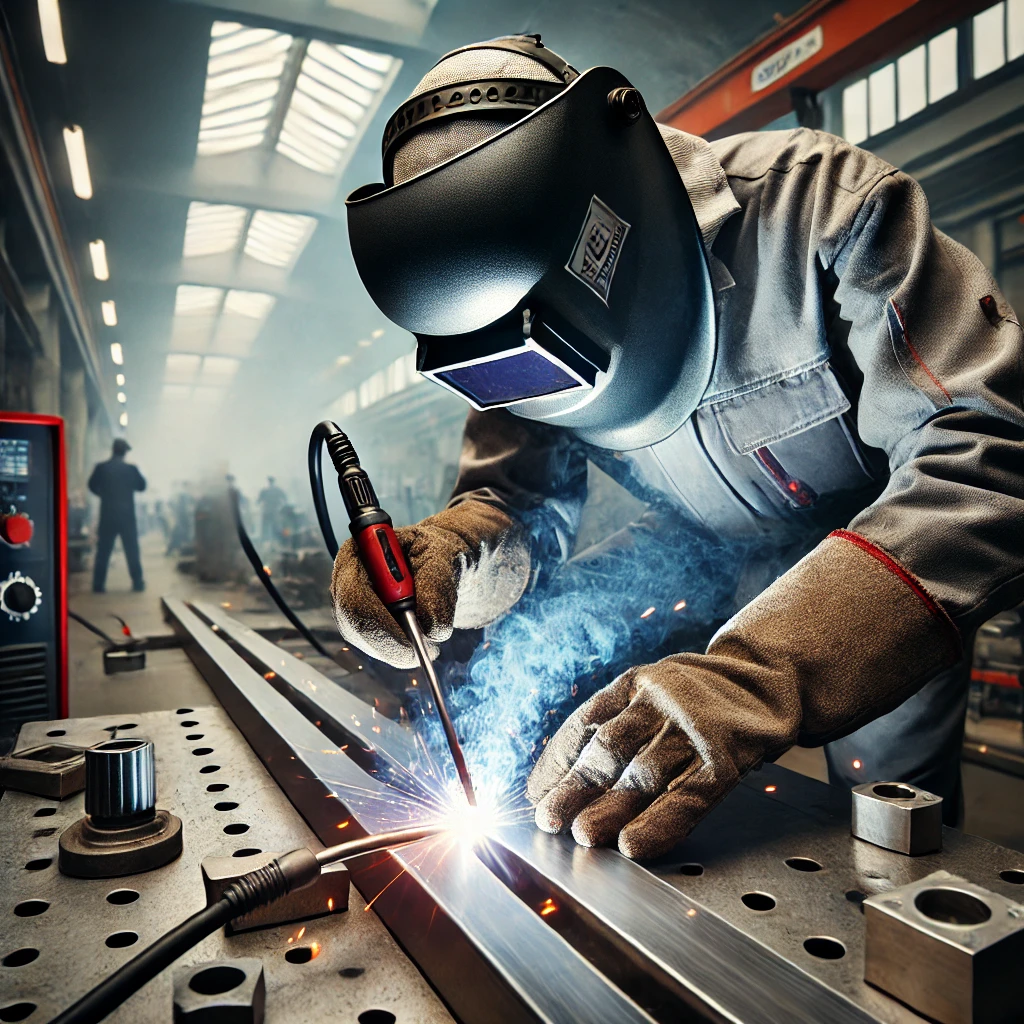
The qualifications of the individual welder are:
- Welding specialist
- Welding foreman
What are the typical working hours for welders ?
The working hours for welders depend on the company in which they work. The size, sector and orientation of the company are important. For example, there are factories where welders work around the clock in shifts. They may work three or four shifts. This also includes working on the weekend.
However, there are also corresponding bonuses for unfavourable working hours. These are expressly regulated in the labour or collective agreement. However, if you do not want to work these unfavourable hours and the associated higher earnings, you can avoid them by working in smaller companies. Here, welding is usually only carried out during typical office hours.
How much does a welder earn ?
The salary an individual welder receives varies from case to case. It depends on the qualification and professional experience. Therefore, newcomers should not look at the salary as a beginner, but rather the growth opportunities that arise with increasing training qualifications and experience.
Of course, it also depends on the job and the company. Complicated welding processes, complicated environmental conditions for working and the like drive up pay. Similarly, a large company is more likely to be able to support a higher salary than a small company.
The gross income for newcomers is often between €3,300 and €3,650 per month. The net income depends on the welder's situation. The salary also depends on the collective agreement and the regulations for overtime and bonuses.
What does welder training involve?
Welder is a profession for which training is required. However, it is not an apprenticeship. Rather, it functions as additional training. This is completed in independent courses and training programmes. Of course, there are also welding courses for beginners.
However, the independent courses and training programmes also mean that there is no training allowance. The welding licence costs or the costs for the training must be borne by the trainee themselves or are covered by the employer as a support measure.
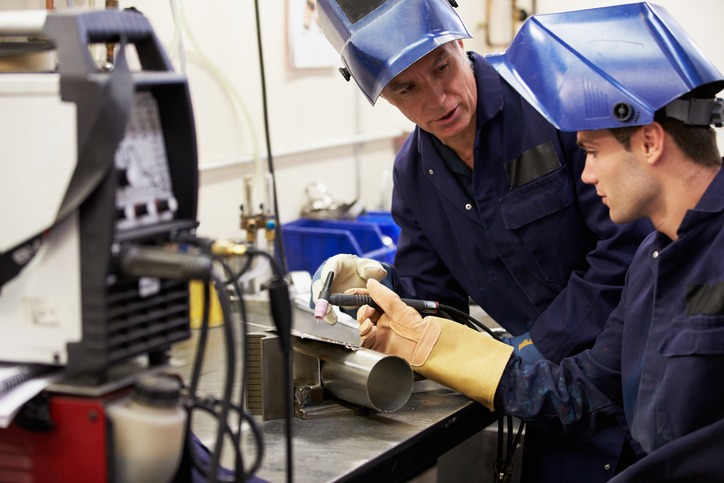
Welding licence
To be employed as a welder, he needs a so-called welding licence. This proves that they are able to carry out certain welding processes for certain materials under certain conditions. Further training courses can then build on this to extend the qualifications.
There is no such thing as a welder who masters all processes. Instead, you need a separate training course for each welding process. This varies in terms of requirements and duration. For drop seam welding, 20 weeks of training are required, while pipe welding only requires 12 weeks of training.
Welding course
There are no standardised requirements for learning the trade. However, this does not mean that there are no requirements for attending a training course. For example, a previously completed welding course may be a prerequisite for entry or a minimum level of experience may be required for certain processes.
Further requirements
There are also other prerequisites that help to successfully complete a welding apprenticeship. These include good hand-eye coordination. Welders should also have excellent manual dexterity and very good spatial awareness.
Another advantage is good academic performance - especially in maths, physics, technology and crafts. Welders must also be physically resilient. During their work, they have to wear heavy protective equipment, work under heat and move heavy components.
The protective equipment also all too often restricts mobility and breathing. This means that you need to be physically fit in order to achieve the right results. They also need to be mentally fit to be able to use the machines and equipment with increasing complexity beyond the welding machine for beginners.
Conclusion
Welders are needed everywhere. This means they can find a secure job with good pay in many sectors. The level of pay depends on qualifications, professional experience, the company, the area of work and additional regulations. However, these can also be influenced by the welder through the choice of industry and company.
As a welder, a welding licence with further qualifications is required. In addition, a good ethical awareness is required to deal with the responsibility of the work. Welders must also be physically fit to withstand the strain of the work.
Welder is not a skilled occupation. The training or welding course must either be paid for by the employee or is taken over by the employee as a further education training programme. It is important to have a lot of manual dexterity, good grades and a good spatial awareness.
Related topics:
